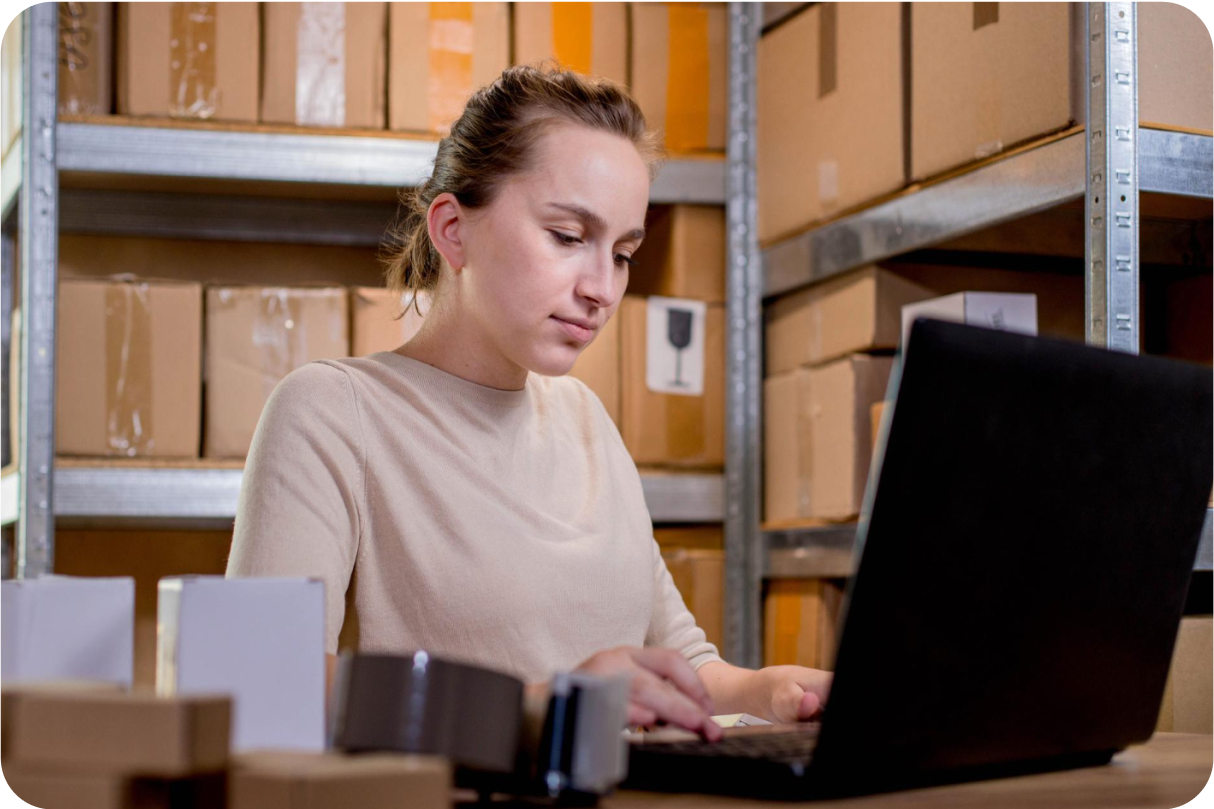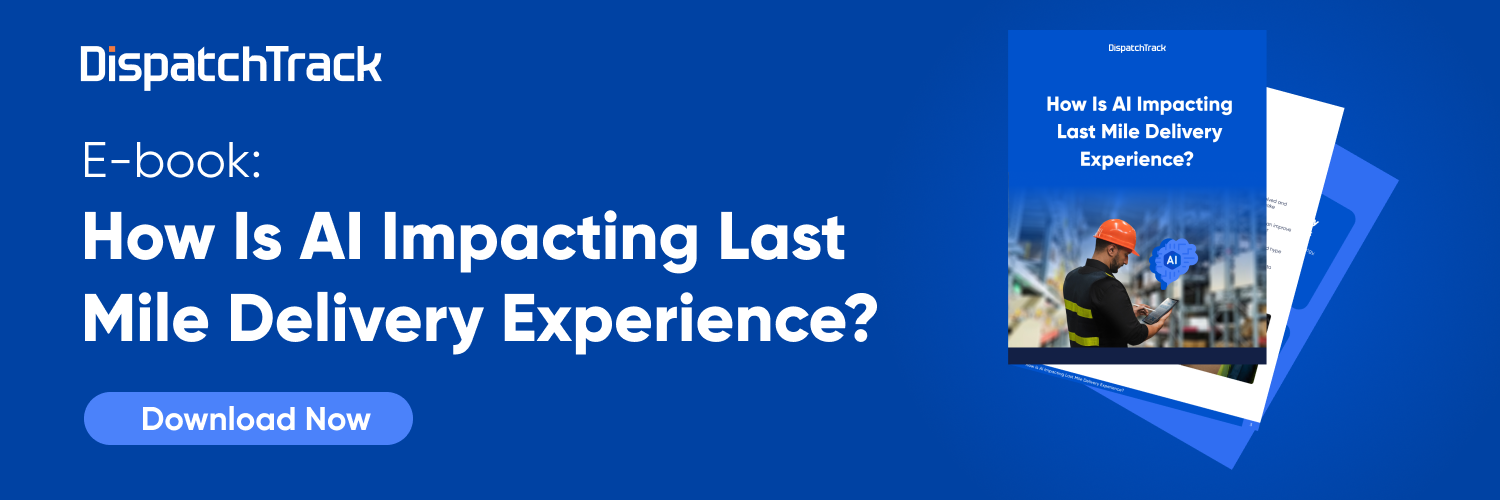One of the most vexing questions in the world of logistics and delivery is: where’s my order? By the time someone is asking that question, it probably means that something has already gone wrong. Either an order that was supposed to have arrived already hasn’t shown up, or the customer hasn’t gotten an update that they expected—either way, you’ve got someone who’s mildly annoyed at best on the phone with your team. 
Even if you have an easy answer at hand (e.g. “your order is running late but the driver will be there in an hour”), it might not be a satisfying one for your customer. And, worst case scenario, you may not have an answer at all and have to call the customer back after you’ve conferred with the driver or hunted down a crucial piece of information.
There is a better way: order tracking software. Back in the day, you might have had to fit all of your assets with ELDs and track locations through a piece of telematics software, but in point of fact you can replicate that functionality (and even improve on it) with a lightweight driver mobile app that connects to your last mile delivery software. From there, it’s easy enough to provide internal teams with the ability to track order locations, statuses, updates, and proof of delivery in real time from a single location.
Crucially, it’s also easy enough to then provide that level of visibility to your customers. With the right order tracking software, your teams can monitor deliveries in real time from a streamlined dashboard, while your customers are able to access a tracking portal with real-time delivery data from the comfort of their own devices.
Getting this right requires a little bit of infrastructure: a driver mobile app that’s easy to use, customer communication tools that can send customers to the order tracking portal, and a last mile software solution that can tie all this data and functionality together neatly. But once all that’s in place, you can start to see concrete benefits right off the bat:
1. Improved Customer Delivery Experience
Customers don’t want to pick up the phone and call in—even under the best of circumstances. Which means that anything you can do to make sure they have access to the information they want, when they want it, can go a long way towards improving your customer satisfaction rates.
Live delivery tracking is the pinnacle of providing up-to-the-minute information. Customers can see where the truck is, when it’s expected to arrive, and even who’s driving, all from the comfort of their own device. This answers their questions before they even arise, and it means that they only need to call in if something truly unexpected arises.
A study we conducted recently showed that 9 in 10 consumers want the ability to track their orders. And we’re pretty confident that that number is nearly as high for business buyers in, say, food and beverage or building supplies—all of which speaks to the power of leveraging order tracking software in your last mile logistics.
2. Reduced Inbound Customer Support Calls
Improving customer delivery experience in this way isn’t just nice to have. For one thing, it’s more expensive to acquire a new customer than to retain an old one, so a higher CSAT score is always going to translate into better sales and lower costs.
But in a more immediate way, this CX improvement will also translate into significantly lower inbound call volumes for your customer support teams. This can be a huge time and money saver, especially for larger organizations. If your teams are spending considerable time on the phone with customers every day, order tracking software has the potential to free up a huge amount of their time, which can then be reinvested in much more valuable tasks.
In other words, you can get more done—more efficiently—without growing your team size.
3. Faster Exception Management
One of the ways that you can conceivably reinvest your team’s time is by leveraging them for more dedicated exception management.
When you have live delivery data at your fingertips as a result of your order tracking software, you can quickly spot orders that might need your attention and deal with them swiftly and efficiently. For instance, you might spot from your delivery tracking dashboard that one particular route is running into delays and that it’s not going to hit its delivery windows for the order later in the day. Here, you can quickly spot these issues and immediately reach out to customers (and potentially drivers) to provide updates and potential reschedule deliveries if needed.
Obviously, no one wants to deal with a delivery exception on the customer’s side, but being proactive in these situations is much better than being reactive. Not only will you limit your CSAT damage, you can also decrease potential missed deliveries and customer-not-at-homes.
4. Streamlined Coordination Between Teams
Some of your customers will reach directly out to customer support if and when they have an issue—whether they need to reschedule their delivery or they’re simply asking about the status—but we’ve all encountered those customers who will automatically reach out to whoever sold them the product in the first place.
When that happens, sales usually has to call in to customer service or dispatch to get the lowdown and then call the customer back. It’s not a satisfying process for anyone, but the customer insists on it as a way to maintain accountability.
But what if the salesperson could directly access live delivery data from their own account and then let the customer know the status of their delivery from there? That’s exactly what you can do when your order tracking software has dedicated sales roles that enable sales personnel and folks on other teams to quickly and easily track orders and view order statuses.
This goes beyond making a few phone calls each week to go more smoothly. It enables you to coordinate much more easily between teams and make sure everyone is on the same page across the board.
5. Better Delivery Data
Once you’ve got the ability to track orders in real time, you effectively have the data you need to create a breadcrumb audit trail for every delivery run. As drivers update their statuses along their routes, you can associate those status updates with specific times and locations. The result is that you can look at past delivery runs and instant visualize how they unfolded.
This puts you in a position to improve visibility after the fact and standardize your delivery data to a point where you can begin to extract real value from it. The goal is to achieve data-driven decision making in logistics, and improving your delivery data in this way helps you get there.
Finding the Right Customer Order Tracking Software
The benefits of order tracking software can be substantial when it comes to last mile logistics, with positive impacts on everything from route performance and customer experience to coordination and visibility.
But order tracking doesn’t happen in a vacuum. It’s really a single piece of the larger last mile logistics puzzle, and the more fully integrated it is with your logistics capabilities the more impactful it can be. That’s why we recommend looking for an order tracker that’s embedded within a larger last mile delivery management software solution—that way, you can get the maximum value out of these powerful capabilities.
